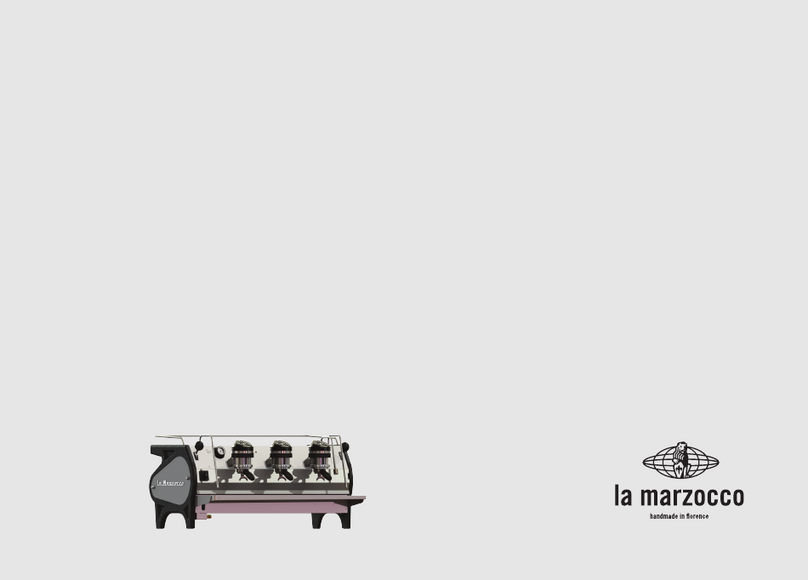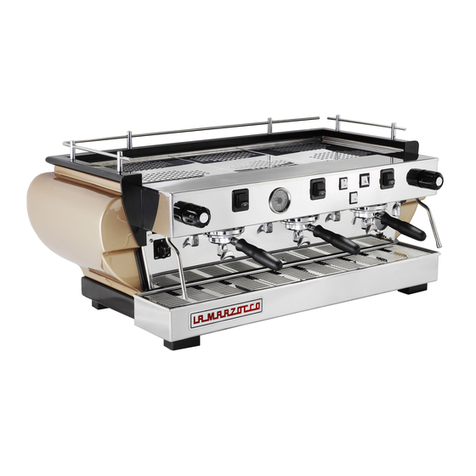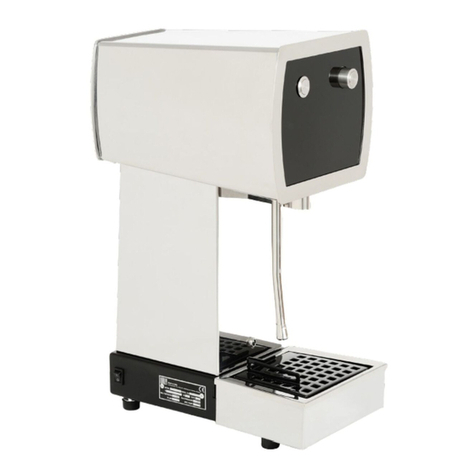
3
1. General Warnings and Safety Specicaons
1) This operang manual is an integral and
essenal part of the product and must
be supplied to users. Users are asked to
read the enclosed warnings and cauons
carefully, as they provide valuable
informaon concerning safety during
installaon, operaon and maintenance.
This manual must be kept in a safe place
and be available for consultaon to new
and experienced users alike.
2) Ensure product integrity by inspecng
the packaging, making sure it presents
no signs of damage which might have
aected the enclosed machine.
3) Check the machine’s integrity aer
having carefully removed the packaging.
Note:
In case of doubt, do not go on any
further and contact your dealer or retailer
immediately. They will send out specialized
personnel authorized to perform service
on the espresso machine.
4) Packaging (boxes, plasc bags, foam
parts and whatever else) must not be
le around within easy reach of children,
due to the potenal danger it represents,
nor be discarded in the environment.
5) Check to see that data on the rang
plate corresponds to those of the main
electrical supply which the machine will
be hooked up to.
6) Installaon must be performed
according to local electrical and plumbing
codes and regulaons. Installaon
must also comply to manufacturer
instrucons, and must be performed by
qualied and authorized personnel.
7) Incorrect installaon may cause injury/
damage to people, animals or objects,
for which the manufacturer shall not be
held responsible.
8) Safe electrical operaon of this
device will be achieved only when the
connecon to the power outlet has been
completed correctly and in observance
of all local, naonal, and internaonal
electrical codes and safety regulaons,
and parcularly by grounding the unit.
Make sure grounding has been done
properly as it represents a fundamental
safety requirement. Ensure qualied
personnel check such connecon.
9) Furthermore, you must ensure that
the capacity of the available electrical
system is suitable for the maximum
power consumpon indicated on the
espresso machine.
10)We do not recommend using adapters,
mulple plugs and/or extension cords.
If you cannot avoid using them, make
sure that they are exclusively of the kind
which conforms to local, naonal, and
internaonal electrical codes and safety
regulaons, being careful not to exceed
the power and current rangs indicated
on such adapters and extension cords.
11) This device must be used exclusively
for the funcons it has been designed
and built for. Any other applicaon is
inappropriate and dangerous.
The manufacturer shall not be held
responsible for any damages caused by
improper and/or irraonal use.
12) Using any electrical device requires
that certain fundamental rules be
observed. In parcular:
• do not touch the device with wet or
humid hands and feet;
WARNING
THIS MACHINE IS FOR PROFESSIONAL USE
ONLY AND SHOULD BE INSTALLED IN LOCA-
TIONS WHERE ITS USE AND MAINTENANCE
IS RESTRICED TO TRAINED PERSONNEL.
CHILDREN ARE FORBIDDEN TO OPERATE
OR PLAY WITH THE MACHINE.































